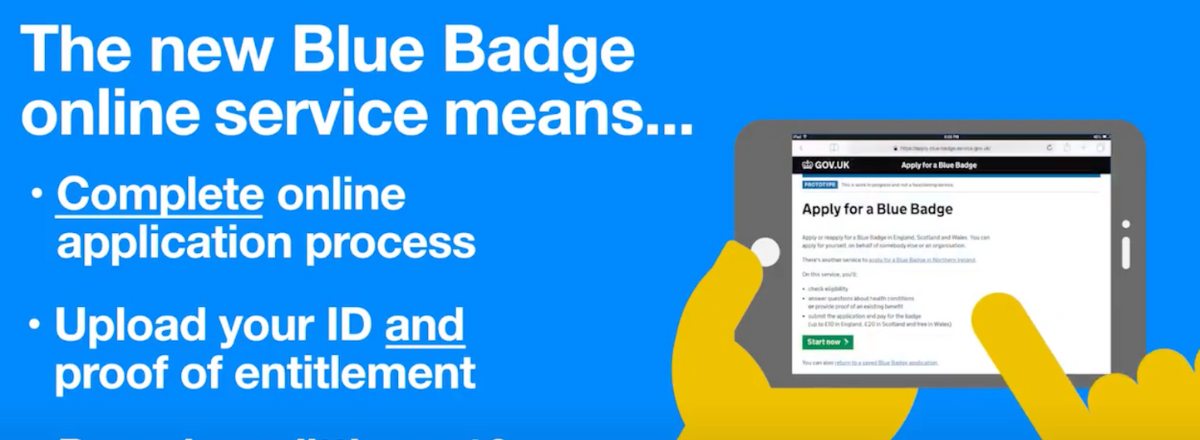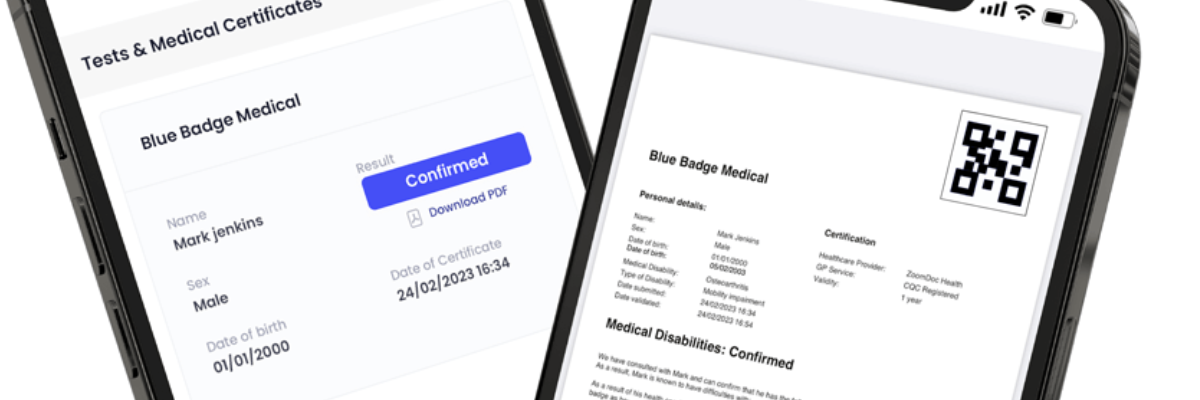If you have a disability or medical condition, a Blue Badge can be almost transformative. The ability to access parking spaces that are not only closer to your destination but give you the room you need to move, can take away many of the worries you may feel about going out.
If you are about to start the process of acquiring a blue badge, a medical letter from ZoomDoc can be acquired quickly and help to support your application process.
Do you need a medical letter for all Blue Badge applications?
Do you need a medical letter for all Blue Badge applications?
Different councils have different requirements for Blue Badge applications. Some require you to apply directly through the council. Others will ask you to apply through the government website. This means that not all applications will need you to provide a medical letter. And that where a medical letter is required, it may demand specific information or criteria. So, before applying for a Blue Badge medical letter, it’s important that you thoroughly look into the specifications of your local council’s application process.
What conditions make you eligible for a Blue Badge?

People who may get a Blue Badge find walking very difficult due to pain, breathlessness or have a life limiting illness.
The criteria for Blue Badge eligibility is fairly wide, but you should automatically qualify if the following applies to you:
- You’ve received a lump sum benefit from the Armed Force and Reserve Forces Compensation Scheme within tariffs 1-8.
- You’re registered as blind.
- You receive a War Pensioners Mobility Supplement.
- You suffer from overwhelming distress due to mental health issues, which prevent you from making journeys.
- You can’t walk further than 50 metres, and as such claim a Personal Independence Payment.
- You receive the Disability Living Allowance and are on the higher rate of the mobility element.
- You have a disability that is both permanent and substantial, which makes it difficult or makes you unable to walk (proof required).
Other criteria that may make you eligible:
- Mobility difficulties.
- Life-limiting illnesses.
- Conditions that require the use of bulky medical equipment when out of the home (this applies to children as well as adults).
- Disabilities in both arms mean you cannot easily operate pay and display parking machines.
- Anxiety.
- Behavioural or awareness issues that may impact other people.
For more specific information, check with your local council or on the UK government website.
How do I apply for a Blue Badge?
Whether the badge is for you or someone you care for, the application process can be difficult, and we recommend having these elements ready before you start:
- Proof of identity (i.e. a passport or driver’s licence).
- Proof of address (i.e. an electricity bill).
- Proof of benefits you’re receiving (i.e. Disability Living Allowance).
- A digital passport photo that was taken recently.
- National Insurance number.
- Child reference number (Only necessary if you are applying for a child.
- If you are reapplying – The expiry date, number, and local council of your current Blue Badge.
Once you have acquired each item of documentation, you can start the application process through the GOV.UK Blue Badge application page.
Extra information may be required depending on what information you put into your application. This is where a Blue Badge medical letter will likely be requested.
Further assessments may also be carried out by the council to ensure eligibility.
How do you get a Blue Badge medical letter?

If you or your passenger has severe mobility problems, the Blue Badge scheme lets you park closer to your destination.
You can get a Blue Badge medical letter from your GP. But because it is not considered an urgent matter, you may find that you will have to wait a number of weeks to gain an appointment. With ZoomDoc, you can obtain a Blue Badge medical letter on the day that you apply for one. Simply upload proof of your ID, and a short video detailing evidence of the condition that means you would benefit from a Blue Badge. Your case will be reviewed by one of our qualified GPs. As long as you meet the required criteria, you will receive your medical letter the same day.
If our GPs review your evidence and decide that you do not meet the relevant criteria, and are unable to provide you with a medical letter, you will receive a refund.
What sort of evidence do you need to supply for a ZoomDoc Blue Badge medical letter?

Our doctors can provide you with a medical letter that will confirm your disability and its impact on your day-to-day life.
When you apply for your medical letter, we will ask you to complete a questionnaire. This will allow our GPs to assess the main areas that impact your mobility and influence your need for a Blue Badge. You will also be required to upload a video, showing us how your disability affects you.
When you’re applying for any kind of support, including a Blue Badge, it can feel like you’re confronted with endless rounds of red tape. At ZoomDoc, our aim is to relieve some of that bureaucracy. We seek to make gaining medical evidence as simple and as fast as possible. Saving you time, effort, and stress, so you can concentrate on the things that matter.
Find out more about Blue Badge medical letters from ZoomDoc.
Blue Badge Frequently Asked Questions
When should I renew my Disabled Badge?
Typically, you will need to reapply for a blue badge every 3 years. Please ensure you reapply before your previous badge expires, as you cannot use an expired badge.
You can renew your badge in the same way you apply for it – Through the GOV.UK blue badge application page. If you require another medical letter to reapply, our GPs will be happy to help.
How long does it take to receive a Blue Badge after applying?
Depending on your local council and whether further assessments are required, it may take up to three months to receive your Blue Badge.
Please feel free to ask the council how long it will take for your application to be processed, they will be happy to assist.
What happens if my Blue Badge application is refused?
There are times when Blue Badge applications are refused. If this is the case for you, the local council should provide you with a good reason for it. If you believe the council to be mistaken, you may ask them to reconsider your application.
Please bear in mind that even if your application is refused, you can and should reapply if your mobility problems worsen.
Where can I park with a Blue Badge?
Owners of a Blue Badge will find a lot more freedom with where they can park. They can park:
- On single or double yellow lines for up to 3 hours. The only caveat is that they cannot park in a space where there is a ban on loading or unloading.
- Free of charge in Pay and Display bays and at on-street parking meters.
You should be aware that the local council may have restrictions on where Blue Badge holders can park, so be sure to check local council sites before parking.
Please also be aware that some boroughs in London have their own concessions for disabled parking.

